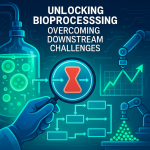🧬 By integrating essential viral genes into HEK293 cells, they ensure high-quality, low-cost manufacturing.
⏱️ Clonal producer cell lines can produce significant titers in 20 weeks, improving scalability and consistency.
🌟 This advancement addresses challenges in gene therapy and supports the ongoing evolution of safe, effective treatments.
Introduction:
The article discusses the recent launch by Asimov of its AAV Edge Stable Producer system, aimed at innovating the manufacturing process of adeno-associated viral vectors (AAVs) for gene therapy. This initiative addresses the limitations associated with traditional production methods, particularly those reliant on transient transfection.
- Asimov’s AAV Edge Stable Producer system seeks to enhance AAV manufacturing standards, aligning them more closely with those for antibody-based biologics.
- Current AAV gene therapy processes often rely on transient systems which are costly and introduce potential variability in product quality.
- By stably integrating viral genes into HEK293 cells, Asimov can generate clonal producer cell lines that enhance consistency and reduce costs associated with viral vector production.
- The new system offers research cell banks in just 20 weeks, providing reliable cell lines that facilitate the manufacture of gene therapies at scale.
- Asimov aims to improve key aspects of gene therapy production, including scalability, safety, efficacy, and product consistency through stable producer cell lines.
Conclusion:
This development by Asimov represents a significant technical advancement in synthetic biology, with implications for the broader gene therapy landscape. By addressing the critical challenges of previous AAV production methodologies, the stable producer cell lines could lead to safer and more effective gene therapies, promising a brighter future for patients with challenging diseases.


